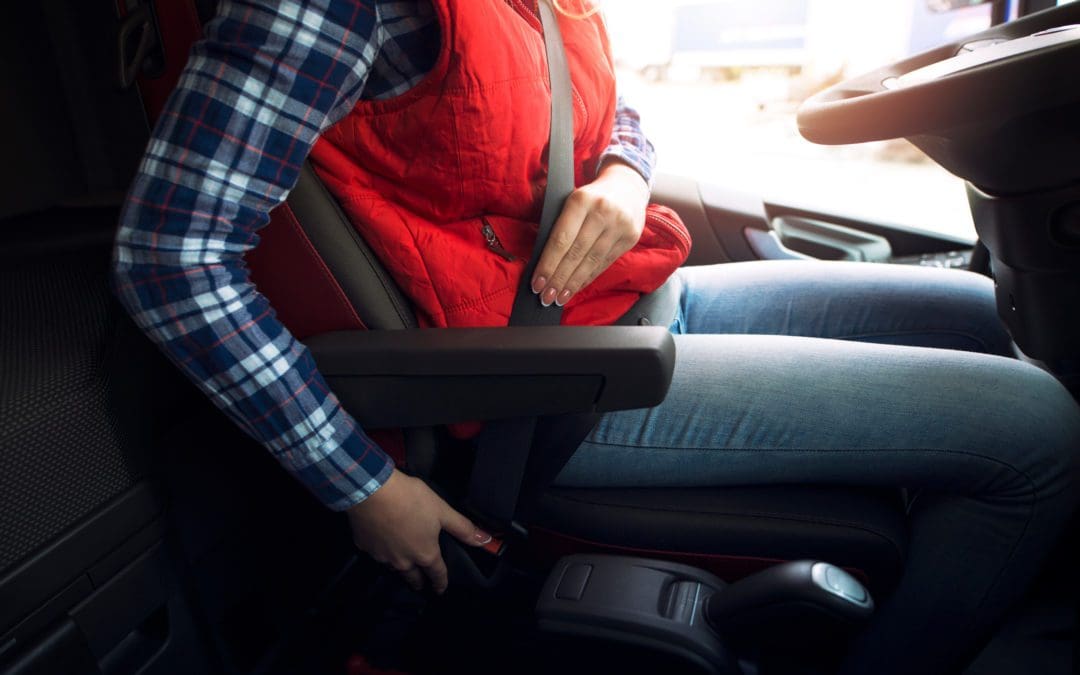CLICK IT OR TICKET
Seat belts have been proven to be one of the best ways to save your life in a crash. Yet many still do not buckle up. Worse still, not wearing a seat belt is a habit that will pass on to impressionable youth who, in turn, will think it is safe to not buckle up.The Click It or Ticket campaign focuses on safety education, strong laws, and law enforcement support to save lives.https://www.nhtsa.gov/campaign/click-it-or-ticket
Seat Belts Save Lives
As I look at our customer’s CSA SMS scores, I continue to see numerous violations regarding failure to use a seat belt. This violation carries a point weighting of 7 and is detrimental to the carrier’s “Unsafe Driving” basic score in the CSA SMS. By drivers operating your trucks and NOT wearing a seat belt, they are providing an unnecessary risk that you do NOT need! In addition, if you look at these violations in states where not wearing a seat belt is a primary offense it is the catalyst for a roadside inspection going beyond just a seat belt violation.
Tips for increased seat belt usage:
- A company policy states that the seat belt is to be always worn in all company vehicles while the vehicle is in motion.
- Defined disciplinary action in your company policy to be taken when a driver receives a seat belt violation.
- When ordering your trucks specify them with bright orange or yellow seat belts for better belt visibility.
- Consider providing a company seat belt life insurance policy for drivers as an incentive for them to wear their seat belts. The policy would pay the driver’s beneficiary if they were killed in an accident while driving their truck and wearing a seat belt.
- There is technology now available that will not let the driver start the truck unless the driver’s seat belt is fastened.
Does your company driver policy address seat belt usage?
One of the safest choices drivers and passengers can make is to buckle up. Many Americans understand the lifesaving value of the seat belt – the national use rate was at 90.4% in 2021. Seat belt use in passenger vehicles saved an estimated 14,955 lives in 2017. Understand the potentially fatal consequences of not wearing a seat belt and learn what you can do to make sure you and your family are properly buckled up every time.
Question: Is it a requirement of the Federal Motor Carrier regulations for a driver to wear a safety belt while driving a commercial motor vehicle?
Answer: FMCSR 392.16 requires a driver to wear a safety belt while in operation of a Commercial Vehicle.
Seat Belt Myth’s
MYTH 1: Safety belts are uncomfortable and restrict movement.
FACT: A 2005 Transportation Research Board study on commercial drivers’ safety belt usage found many drivers do not find wearing safety belts to be uncomfortable or too restrictive of their movements. Once they correctly adjust the seat, lap, and shoulder belt, most drivers find that discomfort and restrictive movement can be alleviated.
MYTH 2: Wearing a safety belt is a personal decision that does not affect anyone else.
FACT: Not wearing a safety belt can certainly affect your family and loved ones. It can also affect other motorists since wearing a safety belt can help you avoid losing control of your truck in a crash. It’s the law; Federal regulations require commercial vehicle drivers to buckle up.
MYTH 3: Safety belts prevent your escape from a burning or submerged vehicle.
FACT: Safety belts can keep you from being knocked unconscious, improving your chances of escape. Fire or submersion occurs in less than 5% of fatal large truck crashes.
MYTH 4: It’s better to be thrown clear of the wreckage in the event of a crash.
FACT: An occupant of a vehicle is four times as likely to be fatally injured when thrown from the vehicle. In 2004, 168 truck drivers died when they were ejected from their cabs during a crash.
MYTH 5: It takes too much time to fasten your safety belt 20 times a day.
FACT: Buckling up takes about three seconds. Even buckling up 20 times a day requires only one minute.
MYTH 6: Good truck drivers don’t need to wear safety belts.
FACT: Good drivers usually don’t cause collisions, but it’s possible that during your career you will be involved in a crash caused by a bad driver, bad weather, mechanical failure, or tire blowout. Wearing a safety belt prevents injuries and fatalities by preventing ejection, and by protecting your head and spinal cord.
MYTH 7: A large truck will protect you. Safety belts are unnecessary.
FACT: In 2004, 634 drivers of large trucks died in truck crashes and 303 of those drivers were not wearing safety belts. Of the 168 drivers killed who were ejected from their vehicles, almost 75% were not wearing safety belts.
MYTH 8: Safety belts aren’t necessary for low-speed driving.
FACT: In a frontal collision occurring at 30 mph, an unbelted person continues to move forward at 30 mph causing him/her to hit the windshield at about 30 mph. This is the same velocity a person falling from the top of a three-story building would experience upon impact with the ground.
MYTH 9: A lap belt offers sufficient protection.
FACT: The lap and shoulder belt design has been proven to hold a driver securely behind the wheel in the event of a crash, greatly increasing the driver’s ability to maintain control of the vehicle and minimizing the chance of serious injury or death.
https://www.fmcsa.dot.gov/sites/fmcsa.dot.gov/files/docs/cmv-fact-myth-brochure.pdf

